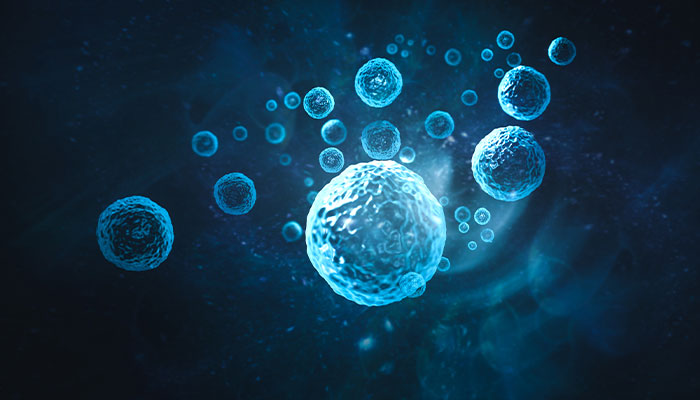HOW CAN WE HELP YOU? Call 1-800-TRY-CHOP
In This Section
Can the NAD Metabolite Explain Why Lymphocytes Demonstrate Varied Immune Responses?

Researchers identified nicotinamide adenine dinucleotide (NAD) as a key metabolite in the growth and proliferation of immune cells.
The findings:
Researchers turned to metabolism to answer the question of why certain immune cells that recognize antigens better can grow and divide more quickly than others on a single cell level. They identified nicotinamide adenine dinucleotide (NAD) as a key metabolite in the metabolic reprogramming required during the early stages of T cell activation, which allows immune cells to change their chemistry to recognize pathogens and expand during immune responses. A cell with more NAD can identify its corresponding antigen and divide more quickly than a cell with less NAD. In manipulating how much NAD a cell could make, researchers could control the cell's behavior, initiating a need to divide from a resting state.
Why it matters:
When our immune systems detect foreign substances, or antigens, they respond by producing more lymphocytes called T and B cells. These cells have receptors that can identify the specific shape of antigens and can help them remember the proper response if exposed to the same antigen again. Identifying which metabolites impact T cell receptor affinity – or how well a T cell can "see" the shape of an antigen – offers new potential to enhance the effectiveness of vaccines and to improve the design of current immunotherapies that treat cancer and other diseases.
Who conducted the study:
Researchers from Children's Hospital of Philadelphia and University of Pennsylvania helped conduct this study, including senior author Will Bailis, PhD, and first author Lucien Turner, PhD, from the Department of Pathology and Medicine at CHOP, and co-author, Douglas Wallace, PhD, director of the Center for Mitochondrial and Epigenomic Medicine. Co-authors from Penn include Joseph Baur, PhD, and Clementina Mesaros, PhD.
How they did it:
Working with the Flow Cytometry Core at CHOP, researchers performed flow cytometry to look at NAD in single cells immediately after activation. The amount of the metabolite within the cell dictated how many times it could divide in the future, allowing researchers to essentially predict how the T cells would behave based on how much NAD they started with.
Because the metabolite glows in a certain light, they could also measure how much of it was present in any given cell, which made it easier to track how manipulating the levels of NAD impacted the cells' behavior. After equalizing the amount of NAD among cells, researchers found that the cells would grow and divide at the same rates, regardless of their natural affinity.
By examining the ways in which metabolism plays a role in the different behaviors of these similar cells, researchers provided insight into the underlying processes behind disease and dysfunction that cannot necessarily be explained by gene regulation or signaling.
Quick thoughts:
"We're interested in how the chemistry of cells in the body regulate, control, and work alongside genes and gene regulation to see if we can treat complex diseases in a different way," Dr. Bailis said. "This study showed that metabolism works alongside classic signaling to explain adaptive immune responses. This one metabolite we discovered is enough to explain why those responses can be so different."
What's next:
Immune cell-based therapies rely on T and B cells to be effective, but these therapies are created from a mix of both high and low affinity cells. This study provides the groundwork for taking that guesswork out of immunotherapy because NAD helps predict the proliferation cycle of a cell before it happens.
Additionally, NAD is made from B3 vitamins, so further studies could help scientists determine how metabolism could be manipulated through diet.
Where the study was published:
The study appears in Science Immunology.


